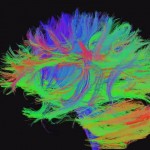Clearing the Fog: Craniosacral Therapy Aims to Ease Dementia
Dementia in the form of a decline of memory and thinking abilities often occurs as people age. Do you worry about this frightening possibility for yourself? For loved ones? If you have any concerns in this arena, you might be interested in the cutting edge approach that has been developed by Michael Morgan LMT, CST-D who has been adapting Cranialsacral therapy techniques to address decreases in mental functioning.
While thinking and memory, like attention and other aspects of cognitive functioning, are areas that psychologists address, sometimes therapies from other fields prove important for us and for our clients to know about.
I was interested therefore when I recently met Michael Morgan at a conference for authors. I wanted to learn more about his innovations at the Craniosacral Therapy Upledger Institute, innovations that have been paving the way for applying Cranio-sacral techniques to the treatment of Alzheimer’s and other types of dementia. While I myself have not seen the treatment done, any new advance in reducing cognitive deficits from aging interests me.
To fill you, and myself, in on this potentially helpful development, I interviewed Michael.
Dr Heitler: How common is dementia, including Alzheimer’s disease?
M.M.: Over 5 million Americans are diagnosed with Alzheimer’s disease and the majority of them are 65 years and older.
Dr. H.: That’s a lot! When would you know if someone has Alzheimer’ or is at risk for dementia (loss of cognitive capacities)?
M.M.:Symptoms can be spotted as early as 40 to 50 years old and it is a disease that gradually worsens over time.
Dr. H.: So what is Craniosacral Therapy? What does it look like? How does it feel to the patient?
M.M.: Craniosacral Therapy is a very gentle, non-invasive way for a therapist to feel, with their hands, the gentle pumping action of cerebral spinal fluid as it circulates within the cranium, along the spinal cord, and down to the sacrum. Hence the name Craniosacral Therapy.
Just like a doctor can palpate, or feel the cardiac rhythm and a nurse can feel the rising and falling of the chest, a therapist with their hands gently placed on the body can feel this gentle movement of the cranial rhythm.
What a client or patient typically feels is a state of great relaxation. Often the patient falls asleep and then emerges feeling rested from a session.
Dr H.: Where did this technique come from initially? And what other psychological, brain, or head conditions can it treat?
M.M.: Craniosacral treatment produces very good results in children with Autism, closed head injuries, headaches, migraines, concussions and now in this newly pioneered application with Alzheimer’s and Dementia.
Dr H: You have told me that you use Craniosacral Techniques to combat Alzheimer’s and other dementias in five ways. What are these five ways?
M.M.: The first way Craniosacral therapy (CST) works is by increasing the movement of cerebrospinal fluid (CSF). This clear liquid is a natural fluid that is found around the spine and brain dictating mechanical and immunological security inside of our skull to regulate blood flow. Blood flow removes pollutants and allows balanced circulation.
As we grow older, our bodies produce less CSF putting us at increased risk for aging and health complications. Upledger’s “Still Point Technique” counteracts these issues by eradicating toxins and improving brain function.
Dr. H: That sounds potentially helpful. What is the second way?
M.M.: Next we aim to lower sympathetic tone, which rises too high in response to stress.
Lack of sleep and toxin build-up are just two of the side-effects that can come from high sympathetic tone. CST aids in reducing our sympathetic tone, encouraging the body to get a full night’s sleep and remove unwanted bacteria.
Dr. H: I’m sure that anything that improves sleep is likely to be healthful. What is the third aspect of CST?
M.M.: CST reduces inflammation throughout the body and brain.
Inflammation of brain tissues contributes to Alzheimer’s and dementia. CST counteracts these issues. Stress, poor eating habits and other life factors can increase inflammation in the body, including in the brain. CST can assist the immune system, reinforcing its defense systems and ultimately lowering inflammation.
Dr.H: Reducing inflammation is likely to be helpful for many disorders. And the fourth way?
M.M.: CST facilitates recovery from brain trauma and concussions.
There are startling similarities in brain scans of individuals with concussions and those diagnosed with Alzheimer’s. Concussions are commonly seen in professional NFL players. Ricky Williams, a well-known football athlete, has testified on the value of CST in his concussion treatment and recovery. As I saw these results, I thought to myself, If CST can work for a competitor in high-intensity sport settings, maybe CST would work for the 5.4 million patients currently diagnosed with Alzheimer’s.
Dr. H: I do hope that your hunch has proved to be correct. What is the fifth way CST seems to help with cognitive functioning that has been declining with age?
M.M: We see our patients’ overall memory and brain functioning improving.
As we grow older, many of us have decreased abilities to retain memory and/or to recollect on specific information. CST helps in the overall movement of bodily fluid required for optimal brain function.
Blood, CSF and interstitial fluid all support our brain’s ability to perform correctly. When these factors are lacking, the brain receives less oxygen, causing it to overexert and causing processes such as memory retention to decline.
CST aims to boost movement of fluid and thereby to enhance memory.
Reposted from PsychologyToday.com/Dr. Susan Heitler

